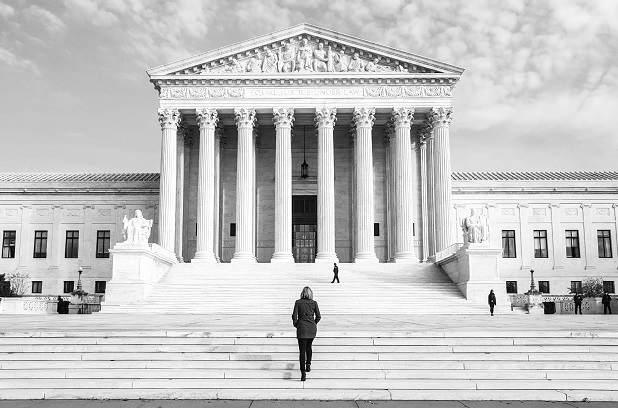The Supreme Court has remanded, or sent back for rehearing, an ESOP claim to the U.S. Court of Appeals for the Second Circuit.
The claim in Retirement Plans Committee of IBM v. Jander involves a complex intercession between ERISA and securities laws, and what a corporate officer with inside information that the company stock will drop should do when they also serve as a fiduciary to the employee stock ownership plan.
The questions raised in the IBM case evolve from a 2014 Supreme Court ESOP decision, Fifth Third Bancorp v. Dudenhoeffer.
In Dudenhoeffer, the Supreme Court established a "more harm than good" pleading standard for claims against fiduciaries, which said courts should consider whether disclosing insider information that would cause company stock value to drop would hurt participants in the ESOP.
In 2014, IBM divested its Microelectronics business. After failing to find a buyer, IBM struck a deal with a chipmaker that resulted in a $2.4 billion write-down to IBM's balance sheet, and another $800 million in costs from the deal.
By the end of the day the deal was announced, IBM's stock price dropped more than $12 a share, or 7 percent of its value.
Plaintiffs in the ESOP brought two suits in the Southern District of New York, one under securities laws, one under ERISA. Both alleged IBM fiduciaries imprudently managed the ESOP by failing to disclose the Microelectronics unit's losses.
The ERISA claim was dismissed on the grounds that disclosing the insider information on the unit's losses would have harmed retirement savers in the ESOP more than not disclosing them would.
On appeal, the 2nd Circuit overturned the lower court, ruling "no prudent fiduciary could have concluded that an earlier disclosure would have done more harm than good."
Unanimous punt
The Supreme Court's decision to remand the case to the 2nd Circuit was unanimous.
"This is a bit of a punt by the Supreme Court," said Kevin Walsh, a partner in the Groom Law Group. "The Court was asked to provide more guidance on Dudenhoeffer. Nine of the most esteemed legal scholars in the world decided they would rather have someone else to that."
Attorneys for IBM argued that ERISA does not require ESOP fiduciaries to act on insider information.
And in its brief, the U.S. Solicitor General argued that an ERISA fiduciary's disclosure of inside information would conflict with securities laws on insider trading and corporate disclosures.
But the lower court did not consider those questions, which is why the justices unanimously decided to remand the case.
"The Second Circuit did not address these arguments, and, for that reason, neither shall we," according to the decision.
Hints of dissent on the High Court
Two supplemental briefs, one filed by Justice Elana Kagan, one by Justice Neil Gorsuch, show that while the court may have been in agreement to remand the case, it holds dissenting views on how ESOP plan fiduciaries should manage insider information.
"The petitioners (IBM) argue that ERISA imposes no duty on an ESOP fiduciary to act on insider information," wrote Justice Kagan. "But Dudenhoeffer makes clear that an ESOP fiduciary at times has such a duty."
Justice Gorsuch suggested that Kagan's reading of Dudenhoeffer is overly broad, and expressed concerns that plan fiduciaries with separate corporate roles–and insider information–could be liable as fiduciaries for non-fiduciary actions.
"Because ERISA fiduciaries are liable only for actions taken while acting as a fiduciary, it would be odd to hold the same fiduciaries liable for alternative actions they could have taken only in some other capacity," wrote Gorsuch.
"Kagan suggested the Jander arguments have some merit, while Gorsuch has concerns there is tension between a plan fiduciary's roles and their non-fiduciary roles," explained Groom Law's Walsh.
Insider information issues present a host of thorny questions, noted Walsh.
"Companies might think plan participants benefit when senior leaders are making investment decisions for a plan. But if we create additional exposure by including senior leadership in plan decision making, we create the risk that the top leadership will not be willing to serve as plan fiduciaries," said Walsh.
"I don't see how that would benefit participants," he added.
READ MORE:
© Touchpoint Markets, All Rights Reserved. Request academic re-use from www.copyright.com. All other uses, submit a request to [email protected]. For more inforrmation visit Asset & Logo Licensing.








